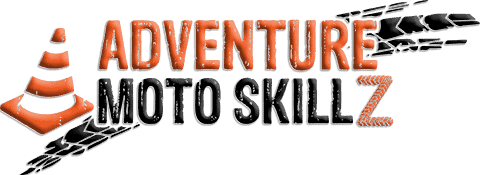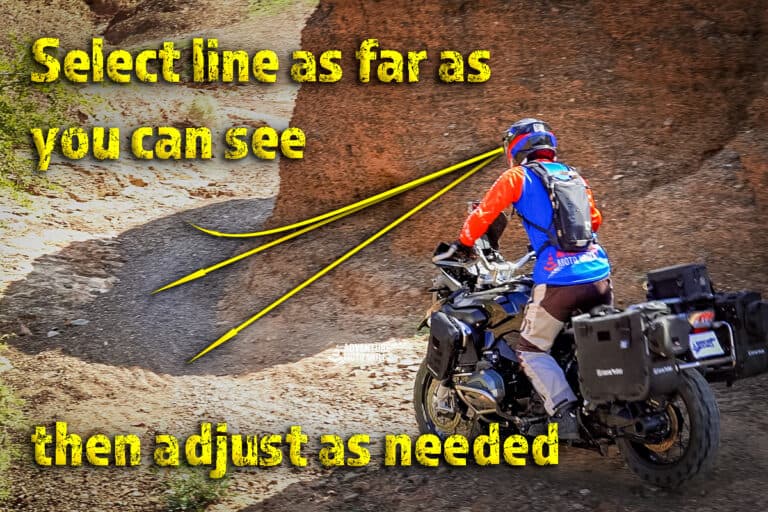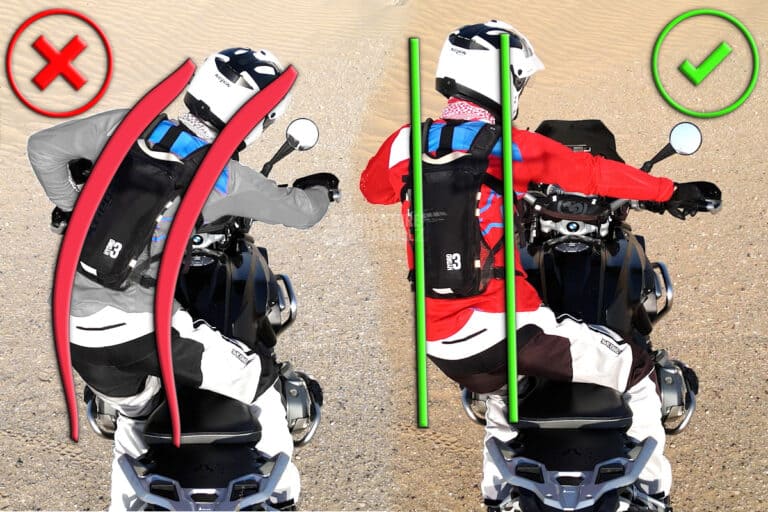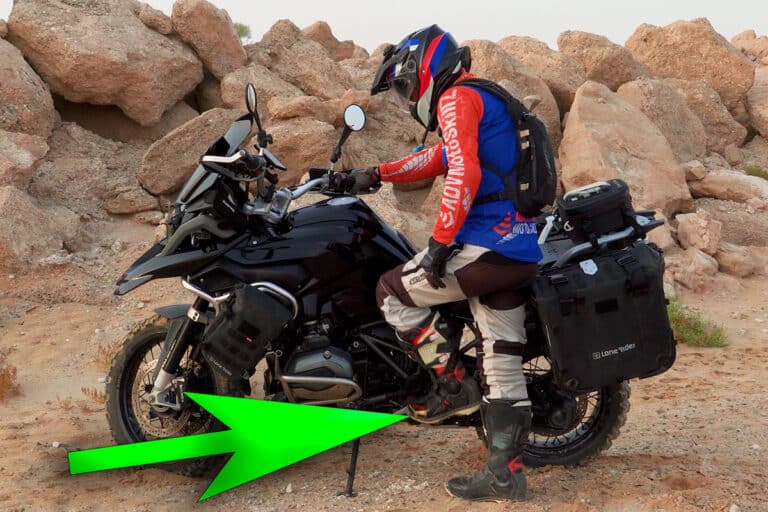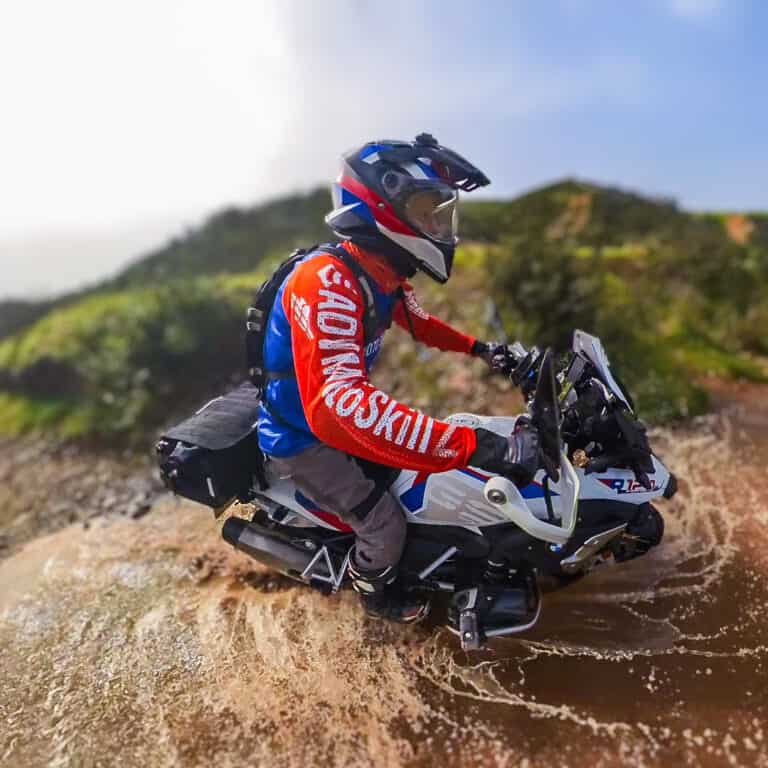FAQs When Buying Your First ADV Off-Road Motorcycle
So you’re thinking of buying your first adventure motorcycle? Adventure bikes are an excellent choice for those looking to get into off-road riding without giving up long distances on asphalt. But with so many options available, it can be tough to know where to start. In this article, we’ll answer some of the most frequently asked questions about buying your first ADV motorcycle. We’ll help you figure out which bike is right for you, and give you some tips on preparing for your first adventure ride!
Purchasing your first ADV off-road bike is an exciting time and one filled with questions regarding whether to purchase new or used, what size engine is best, and how much this is all ultimately going to cost. The answers to these questions are personal, but we can help guide you to find the best ADV bike for YOU.
This post may contain Affiliate Links. Please see our Privacy & Disclosure Policy for more details.
My motorcycle journey first began on a Harley Davidson Streetglide before deciding to trade in for an off-road adventure motorcycle. I knew an adventure bike was the right choice for me because I wanted a street-legal option that could handle off-road terrain and had enough power to double as a touring bike for when my wife would join me as a passenger. But which make and model would be the right one? Let’s talk about it here.
(Spoiler alert – that’s my BMW in the picture above)
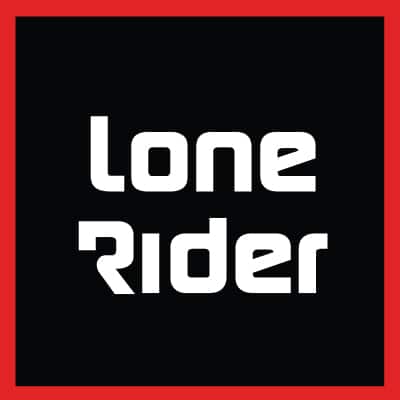
Top-quality gear for your next adventure
Used and recommended by ADVMotoSkillZ
FAQ #1
Should I buy a new or used ADV motorcycle?
Personally, I have never purchased a motorcycle brand new off the showroom floor. Purchasing second-hand has served me well for both on-road and off-road bikes. That said, let’s look at the benefits of both options to help determine which is best for you:
Used Bike Advantages
- Save money on initial purchase
- Used bikes often come with aftermarket kit
- No break-in period needed
- Easy to try before you buy
- Freedom to use any mechanic or DIY
- No depreciation after purchase
New Bike Advantages
- State of the art options
- Latest safety features are stock
- Under warranty
- Able to the add aftermarket parts you prefer
- Ability to build a relationship with the brand
- Financing available
Buying, riding, and then selling used motorcycles has been something I have enjoyed for years. Used bikes have allowed me to own and experience different engine sizes, brands, and features without the big upfront cost.
Here is my checklist of must-ask questions when inspecting a used bike:
- Did the current owner purchase the bike new or used?
- What is the mileage and what type of riding terrain has the bike experienced?
- Does the current owner have it serviced regularly and are there receipts to prove it?
- Why is the owner selling this particular bike?
- Is there any major service that is needed that they are avoiding paying for?
The answers to these questions may provide reasons for you to negotiate a lower selling price, walk away from a bad deal or hopefully, find the perfect bike at the best price.
However, if the process is not for you or having the latest features and a full warranty package is something that holds greater value, then buying new is likely the way to go. Despite the added cost of a new bike, dealerships are typically keen to finance your purchase, if needed, to spread the cost out over time.
FAQ #2
I want to go off-road, but also enjoy road riding … Can an ADV bike do that?
Yes, yes, and yes again! Adventure motorcycles are great for off-road fun, touring, and daily commuting. The larger engine size of an adventure bike makes it smooth on the roads for both rider and pillion. The benefits of a large gas tank and comfort features like a big windscreen and well-padded seats each cast additional votes for the ADV bike’s on-road worthiness.
When investing in an adventure motorcycle, you get a capable multi-purpose machine that will be there for you for off-road camping adventures, single-track fun, or urban riding with ease. Two-up riding is comfortable for both rider and passenger with the ADV bike’s ample suspension, ability to carry luggage, and powerful engine to carry it all with ease.

Innovative Motorcycle Tool Sets – Compact & Reliable
Used and recommended by ADVMotoSkillZ
FAQ #3
How many cc’s is best for my first ADV bike?
Adventure motorcycles begin at 650cc and get bigger up to 1300cc, while bikes smaller than 650cc will be classified as either dual-sport or enduro. There is a misconception that first-time off-road adventure riders should always go for smaller 650 or 800cc bikes versus 1190 or 1250cc. Engine size alone should not be a determining factor, simply a consideration.
My first adventure bike was a second-hand BMW G650 Sertao because I thought the smaller engine would offer a better initial learning experience for off-road. In reality, the seat height was taller than the larger engine BMW 1200GS bikes on the market at that time and the overall weight of the bike was not all that much less. At 5’10” (178cm), my frame fit much better on the 1200GS than the G650 I was learning on. I held onto that Sertao for only one season and opted for a bike that fit me better and saw my skills and confidence quickly improve.
Sit on and test drive as many different makes and models as you can and do not allow your purchase decision to be based on engine size alone.
PRO TIP: Wear your off-road motorcycle boots (and trousers if possible) when you sit on or test drive bikes. A bike that seems a bit too tall with trainers on may feel stable and secure with proper riding boots.
FAQ #4
Are there any hidden costs after I buy my ADV motorcycle?
Beyond the expense of a motorcycle license and insurance, there is the need for personal riding gear and protective bike add-ons. Here is a quick overview of some recommendations for adventure motorcycle riding:
Personal Riding Gear
- Helmet
- Adventure or enduro boots
- Palm padded gloves
- Armored jacket (elbows, shoulder, spine, chest)
- Armored trousers (hips & knees)
- Hydration backpack
Protective Bike Add-Ons
- Engine guards
- Bash plate
- Handguards
- Headlight protector
- Off-road mirrors
- Side Stand widener
- Off-road pegs
New and used bikes will likely come to you with some of the needed protection, so total additional investment will vary based on your bike purchase and how much you want to personalize it. Some riders like having helmet communication systems and navigation/GPS systems that will push up the initial costs. Items like earplugs, tank bags, pannier systems, etc will all be on your wish list at some point.
Dealerships will typically offer discounts on any after-market parts if purchased together with the new bike, which is worth taking advantage of.
When it comes to off-road riding, these bigger bikes do have some limitations when the terrain becomes a bit more technical. If you plan on riding areas more challenging than flat gravel or dirt roads, then I recommend investing in off-road training to learn the fundamental skills needed to maneuver these bigger bikes safely.
All the gear all the time is a constant theme here at ADVMotoSkillZ and we encourage you to invest in the best quality protective gear you can afford.
FAQ #5
Which drivetrain style is better for off-road motorcycles?
In the world of motorcycles, there are chain drive, belt drive, and shaft-drive bikes and all provide a comfortable and dependable ride. Belt drive systems are more commonly seen in cruiser bikes and are not found on ADV bikes.
Chain drive motorcycles have a chain connecting the gears to the wheels. These are the most common and least expensive drivetrains found on off-road bikes and have the benefit of being easily repaired out on the trails with just a few spare links. But they do require some routine maintenance, so if you purchase a chain-drive bike, be prepared to:
- Inspect the chain before and after each ride to look for signs of wear or damage
- Replace chain links at home if damage is found
- Clean chain regularly to prevent dirt and debris build-up
- Lubricate chain per manufacturer recommendations to keep it from drying out
Shaft drive motorcycle uses a driveshaft in place of a chain or belt to transfer power from the engine to the rear wheel. This type of motorcycle is typically more expensive than its chain or belt-driven counterparts but offers several advantages. One is that shaft drive motorcycles require less daily maintenance as there are no chains to lubricate or repair. Additionally, shaft drive motorcycles deliver a smoother ride with less vibration being transferred from the engine to the rider.
FAQ #6
Which motorcycle brand should I buy for my first ADV bike?
Here we discuss the most controversial of all motorcycle topics … which brand is “best”. We are spoiled for choice with options today, with so many manufacturers joining the adventure bike market. Fair warning … you will not be provided with a definitive answer here, but you will get a framework to consider while making your choice.
Factors to consider when choosing a brand include:
- Presence in your local community (for service and support)
- Ease of access to parts in the area where you may travel to (RTW riders will have different needs than those who stick closer to home)
- Personal preference on design and style (pick a bike that makes you smile when you look at it)
- If you like DIY, choose a brand that you are familiar with or are willing to learn (for example: if you don’t like getting your hands dirty, avoid models that require frequent chain lube)
- After-market availability for the make & model bike (brand new models may not have a full selection of after-market kit for up to a year)
List of quality Adventure Motorcycle Brand options (alphabetical):
Bonus FAQ – Should I buy DCT or manual?
DCT stands for Automatic Dual-Clutch Transmission and therefore means the bike has no clutch, but instead provides automated shifting (much like an automatic versus manual car transmission). This feature creates an easier riding experience and ensures smooth automated gear changes.
However, by removing the clutch and manual shifting capabilities, they also remove the ability to feather the clutch and utilize the friction zone during off-road riding. If you plan on riding a wide variety of off-road terrains and want to learn techniques such as elephant turn and brake slides, then a manual transmission will give you the freedom to enjoy all levels of these riding techniques.
In contrast, if you will have your adventure motorcycle mainly on the road with only the occasional patch of gravel or dirt, then a DCT will likely not hinder your riding experience in any way.

About the Author
Coach Mike is a Certified Off-Road Motorcycle Instructor & founder of ADVMotoSkillZ.
Riding tips from ADVMotoSkillZ reach thousands of international riders daily through social & blogs.
Click here to learn more about Mike’s motorcycle evolution from a Harley road rider to finding his true passion for off-road riding on a BMW 1200 GS.
If you would like to send Mike a quick message or invite him to provide training at your local facility, then visit the contact page here.
